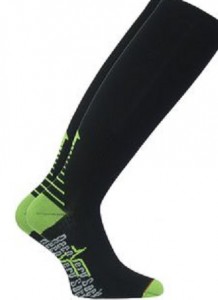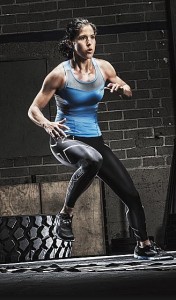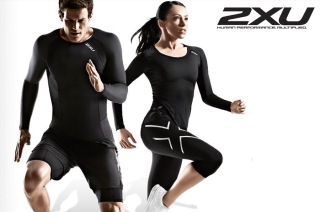Can Compression Clothing Enhance Your Workout?
Studies raise interesting questions about those snug-fitting socks, shorts, tights or shirts that are reputed to improve performance during exercise and speed recovery afterward.”> In recent years, many people who exercise have begun wearing compression clothes. These snug-fitting socks, shorts, tights or shirts, which squeeze muscles as tightly as sausage casings, are reputed to improve performance during exercise and speed recovery afterward.
But a new study and several reviews of relevant research raise interesting questions about whether the garments really function as expected and help people to exercise better and, if they do, whether it is the clothing or people’s expectations doing most of the work.
The rationales for wearing compression clothing are logical enough. “The garments supposedly increase blood circulation and thus oxygen delivery for improved sport performance,” said Abigail Stickford, a postdoctoral researcher at the Institute for Exercise and Environmental Medicine at the University of Texas Southwestern Medical Center in Dallas, who led the new study of compression clothes.
The clothes also are thought to refine proprioception, which is someone’s sense of how the body is positioned in space. Better proprioception should, in theory at least, improve the efficiency of movement and reduce the number of muscles that need to be activated, making exercise less tiring. Meanwhile, the clothes also are believed to reduce fatigue and soreness after exercise by literally squeezing the muscles with a kind of no-hands massage and, by increasing blood flow to muscles, help to flush out unwanted exercise-related biochemicals.
 The evidence to support such benefits has been largely anecdotal, however.
The evidence to support such benefits has been largely anecdotal, however.
So for the new study, which was published this month in The International Journal of Sports Physiology and Performance, Dr. Stickford, then a doctoral student at Indiana University in Bloomington, decided to perform a simple test of compression gear. “Based upon the results of this study, lower-leg compression sleeves are unlikely to improve endurance running performance,” Dr. Stickford said.
Other studies of compression clothing have produced similar results. A particularly interesting 2013 study, for instance, showed that compression shorts do not increase blood flow to leg muscles after exercise, although enhanced blood flow is supposed to be one of the primary means by which the clothes speed recovery. Instead, the scientists found, exercise itself greatly increased postexercise blood flow to muscles, but compression shorts did not further augment that flow and in fact reduced the amount of blood reaching the deepest leg muscles.
[one_fourth]
[/one_fourth][three_fourth_last]
Still other studies, however, have been more positive about compression. A review of more than 30 studies of the effects of compression clothing in sports performance and recovery, for instance, determined that “compression clothing may assist athletic performance and recovery in given situations.” Those situations involve sports such as basketball or track and field that require explosive sprinting and leaping, although athletes in other sports, including weight training, have reported feeling less sore if they wear compression clothes than if they don’t, the review found.
How the clothes work, though, remains mostly baffling — and may owe something to input from the mind. “We can’t blind people” in exercise studies about whether they are wearing compression garments or not, said Billy Sperlich, a professor of exercise science at the University of Würzburg in Germany, who led the study of blood flow and also was a co-author of the recent review.
So people’s expectations of what the clothes will accomplish may color their results.
There are caveats, though, for anyone who is considering wriggling into compression garments, he said. The clothes do need to fit correctly, he said, which means tightly. Many people find that they dislike the feeling of being squished.
“In our studies, about 50 percent of the subjects like compression, 30 percent are indifferent and 20 percent don’t like the compression at all,” Dr. Sperlich said. The clothes also need to be worn for several hours after strenuous exercise sessions, he said, if they are to improve recovery, raising delicate issues about odors.
The good news is that no study to date has found any negative physiological effects from wearing compression clothing, Dr. Stickford said. So if you do decide to experiment, “there is not much to lose besides $40 or so.”








